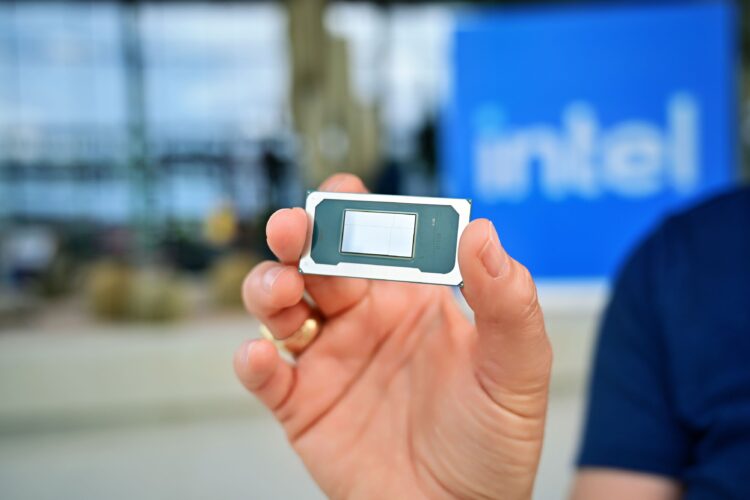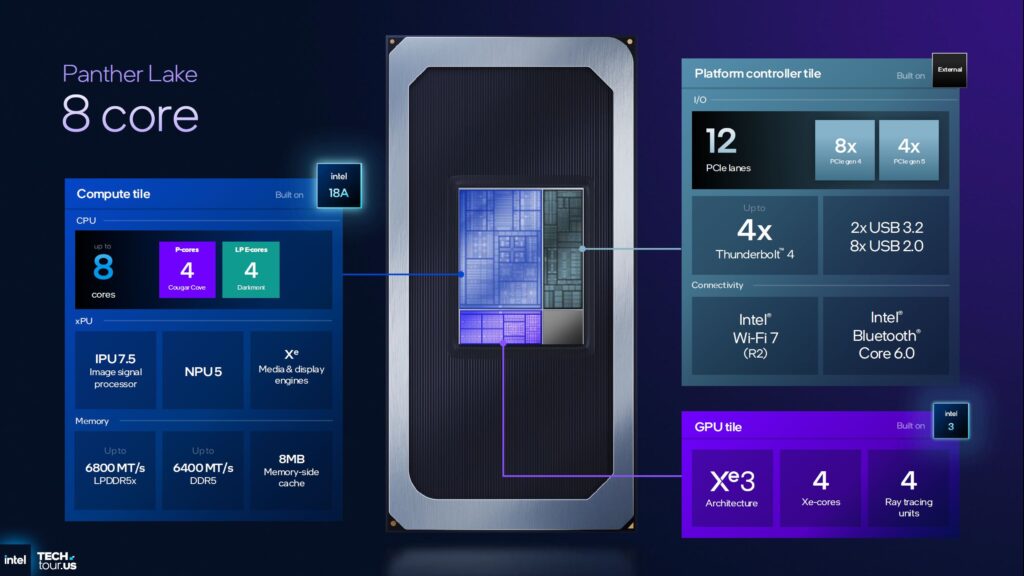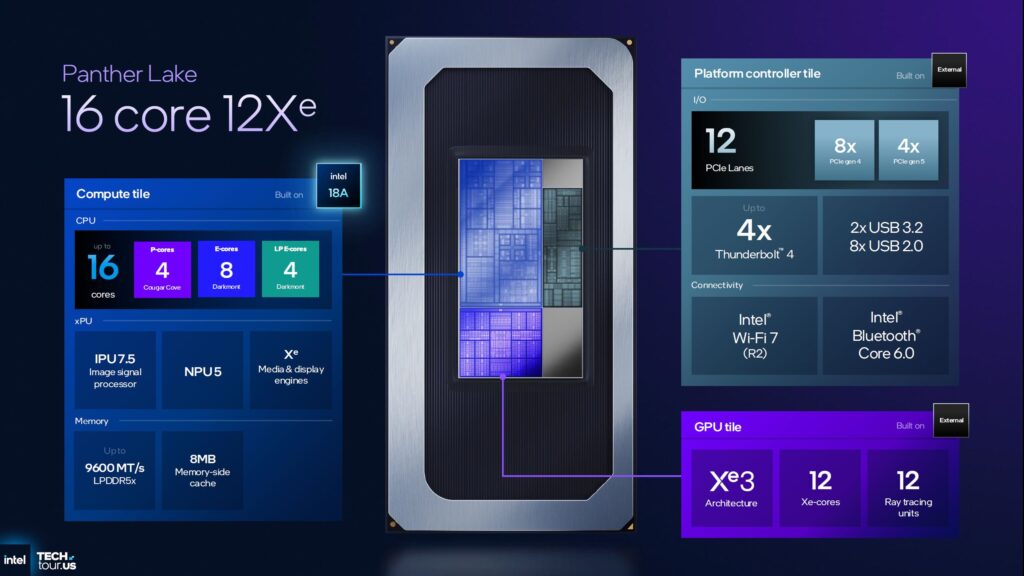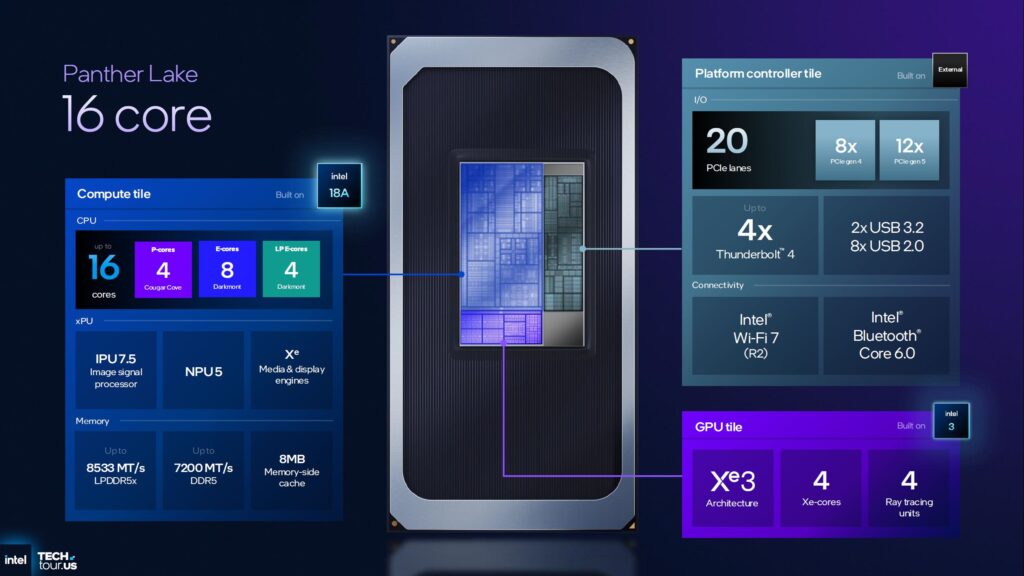The veil covering Intel’s Panther Lake mobile chipset is finally lifted. With that, we can finally share some of the relevant details surrounding the chipmaker’s new 18A chipset.
Firstly, and as mentioned, Panther Lake will be made using Intel’s new 18A process, which itself will be made at its new Arizona-based Fab 52 plant. The next generation of mobile processors under the flag will also be known as the Core Ultra Series 3 platform.
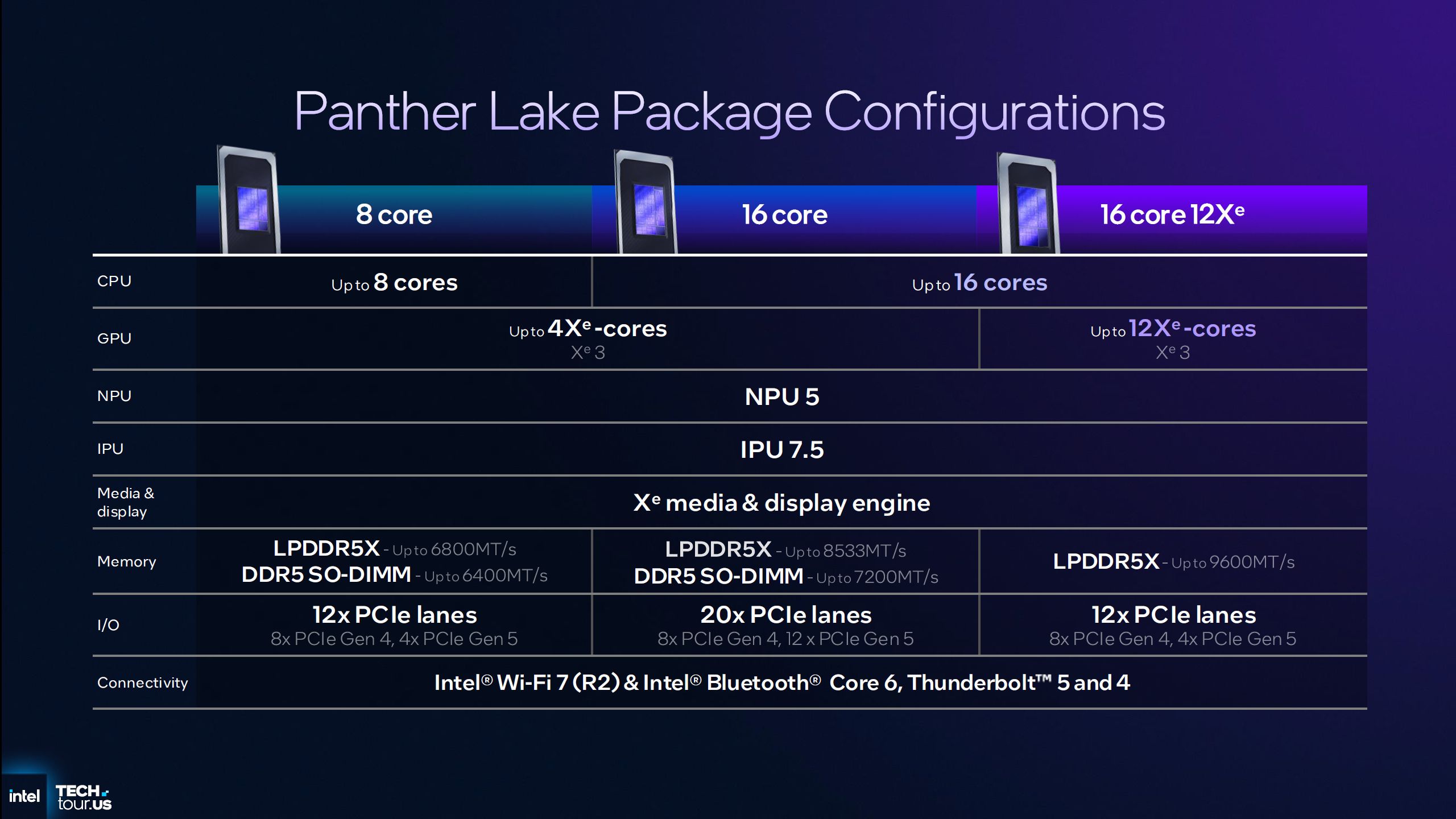
Specs-wise, Panther Lake is made up of Cougar Cove P-Cores and Darkmont E-Cores, the latter also applicable for its LP E-Cores. Further, the new chipset also features Intel’s new Xe3 graphics architecture, featuring up to 16MB of L2 cache, 12 ray tracing units, and up to 120 TOPS of AI performance, if need be. On a related note, the chipmaker also announced that its XeSS3 upscaler will be getting multiframe generation of up to 4x, making it similar to NVIDIA’s own DLSS technology.
Speaking of AI, Panther Lake also features a new NPU5 for AI acceleration, featuring 50 TOPS of performance and a performance boost of more than 40% over Lunar Lake. There’s also a next-gen IPU 7.5, allowing any device using the chipset to support up to three concurrent camera, and capturing 16MP still images.

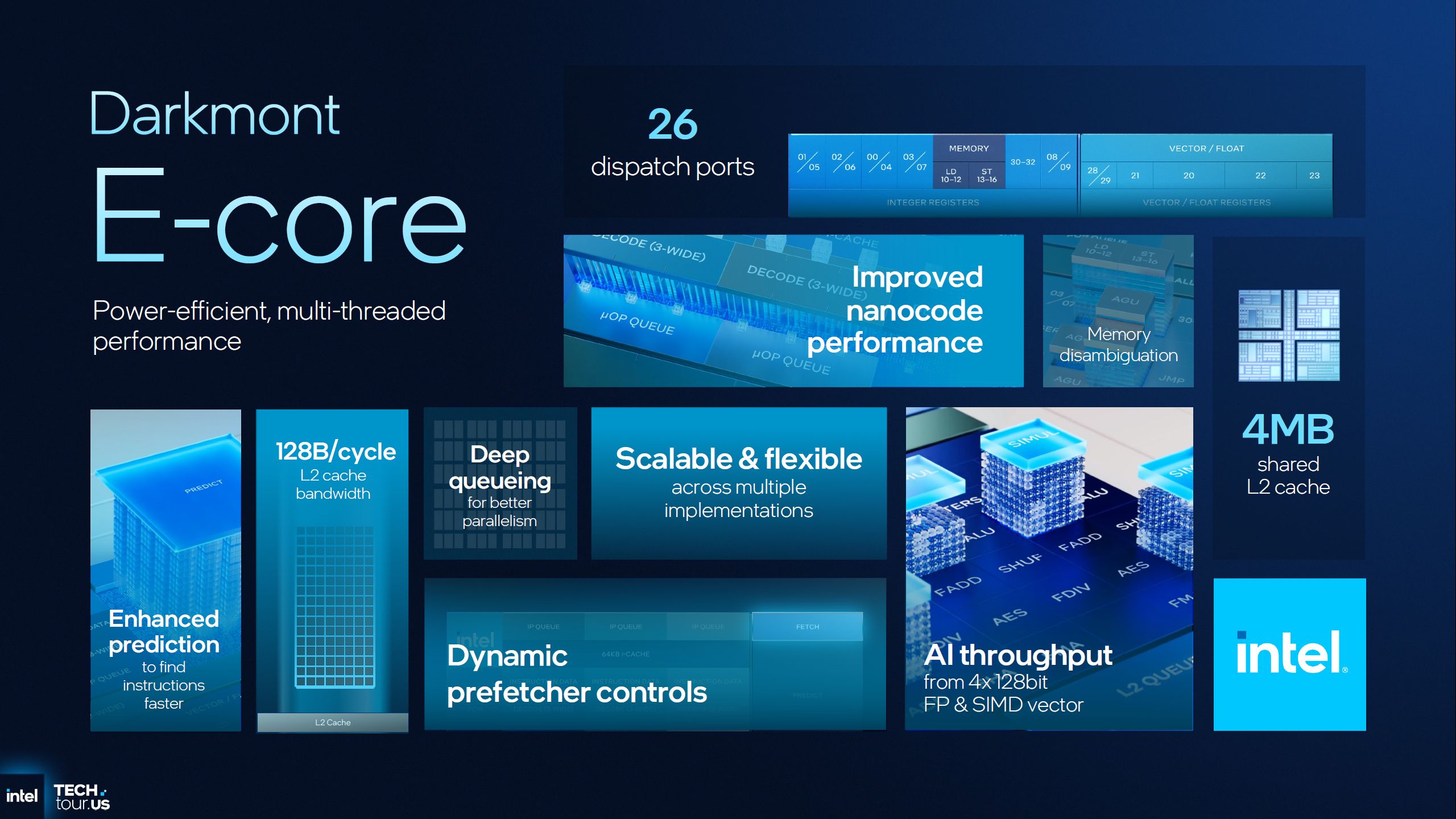
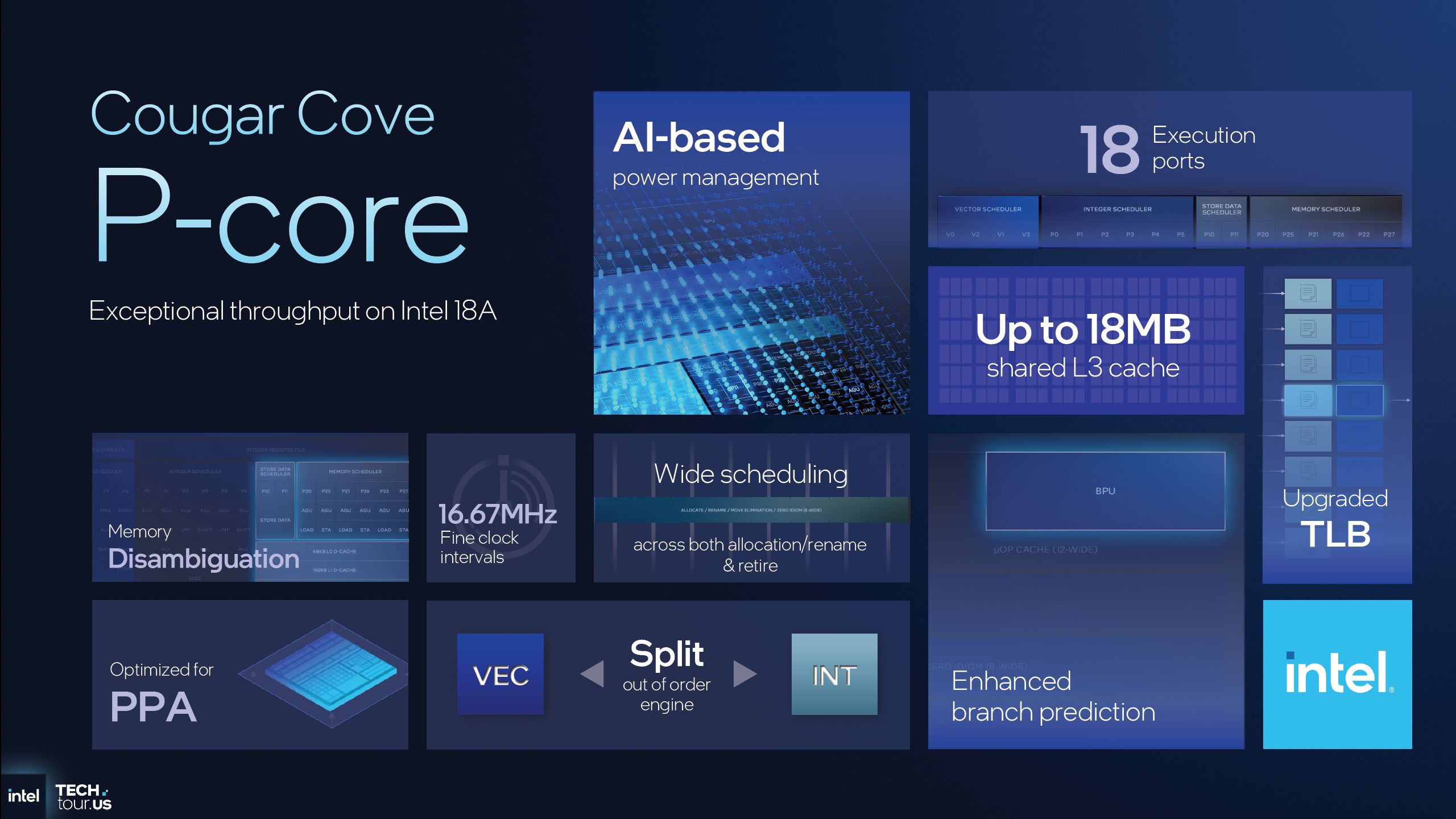
Intel currently has three Panther Lake SKUs ready for roll out, each with different core counts. The base model comprises eight CPU cores, while the other two are variants using 16-cores. Both the 8-core and base 16-core model will feature up to four Xe3-cores, while the top-tier model features up to 12 Xe3-cores.
That said, the trade-off between the two 16-cores is the number of PCIe lanes they get: both the 8-core and 16-core 12Xe models get 12x PCIe lanes, which are divided into eight Gen4 and four Gen5 lanes, while the base 16-core model gets an additional eight Gen5 lanes, bringing the total up to 20 lanes.
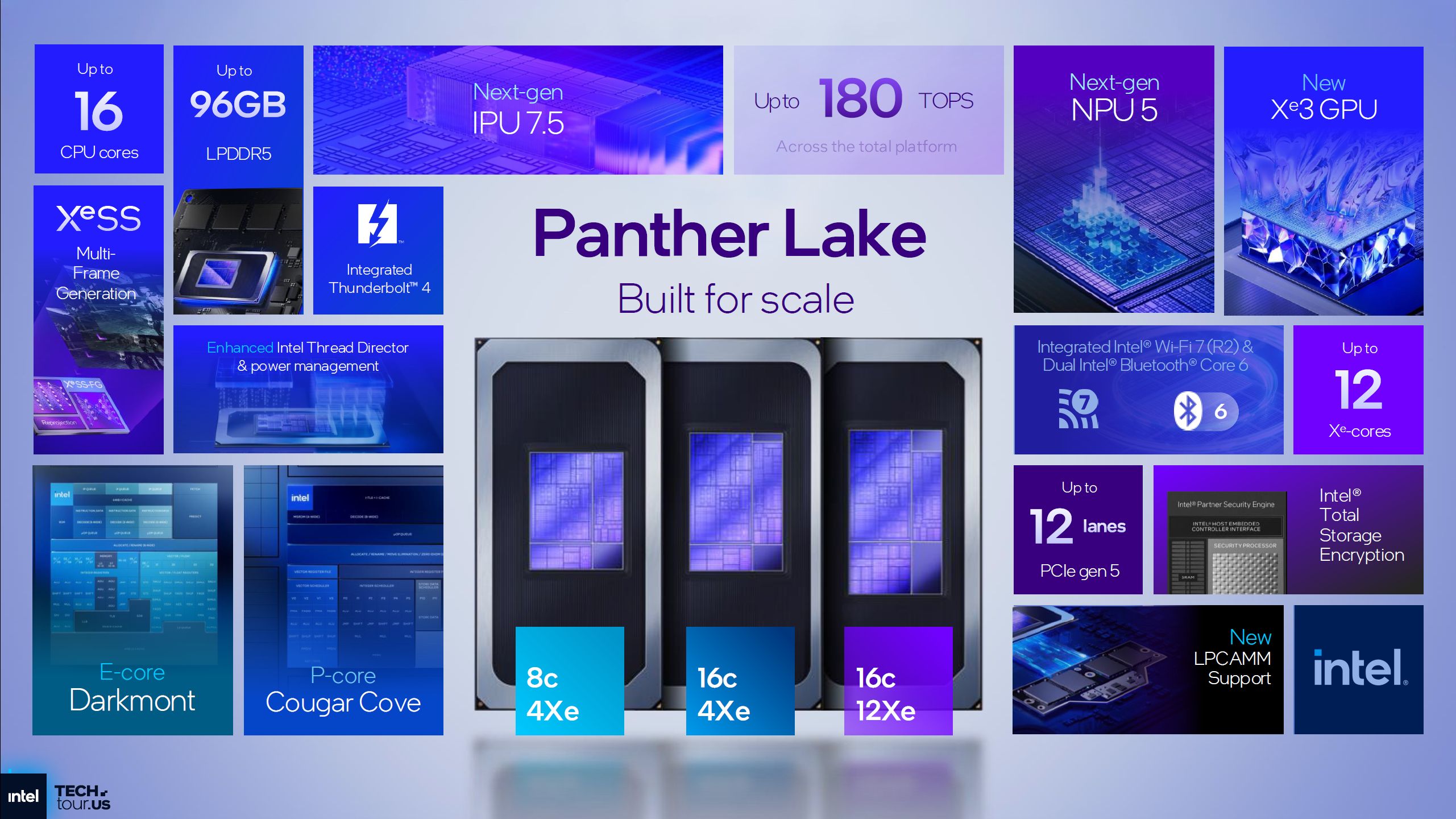
All Panther Lake SKUs will support the new LPCAMM LPDDR5X memory standard that we saw at Computex 2025 earlier in the year, with speeds of up to 9,600MT/s, while the latter two support SO-DIMM memory speeds of up to 7,200MT/s. Laptops powered by the new Intel Core Ultra Series 3 chipsets are expected to make their debut at CES 2026 next year, with general availability starting in January of that year as well.
(Source: Intel)

